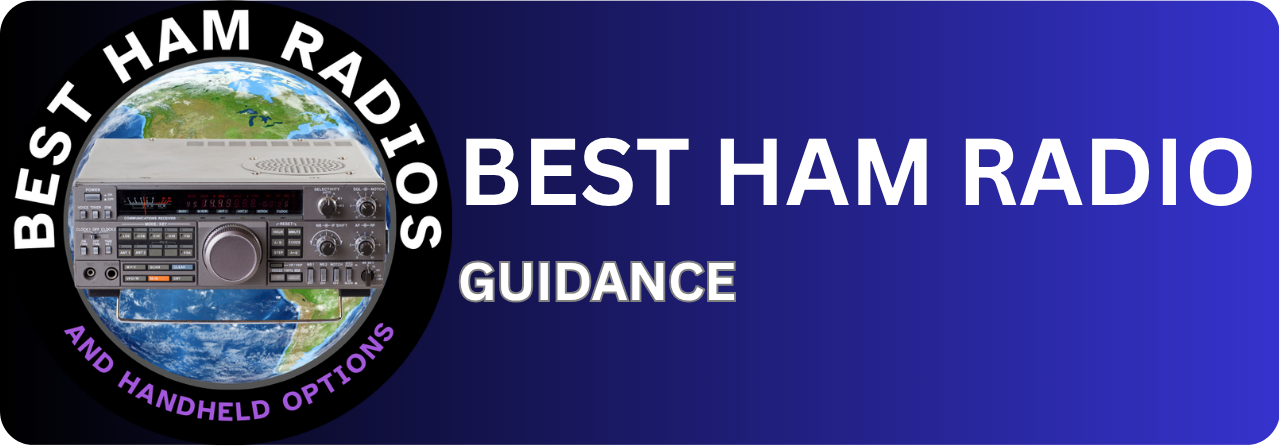Best Ham Radios To Buy: Top Budget-Friendly Ham Radio Options Under $200
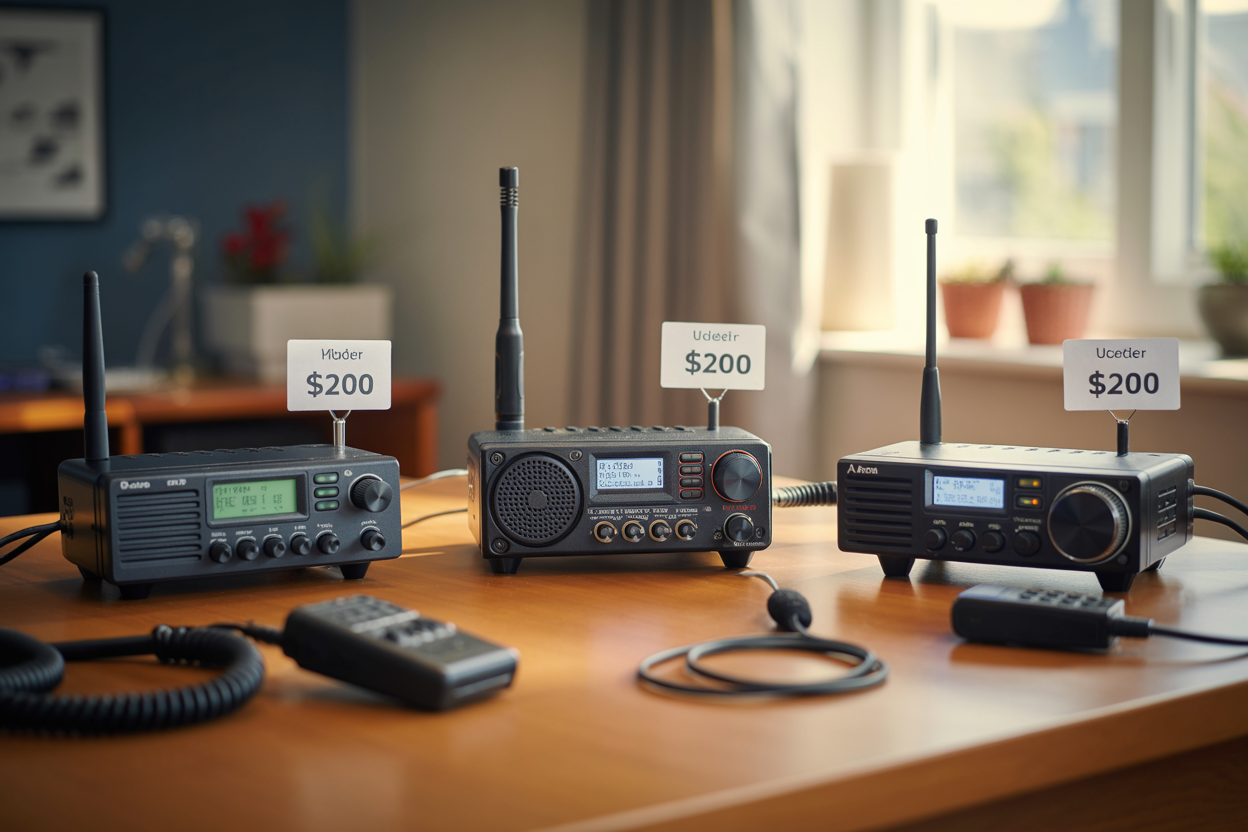
Table of Contents
- Best Ham Radios To Buy: Top Budget-Friendly Ham Radio Options Under $200
Baofeng UV-5R Series Performance and Value
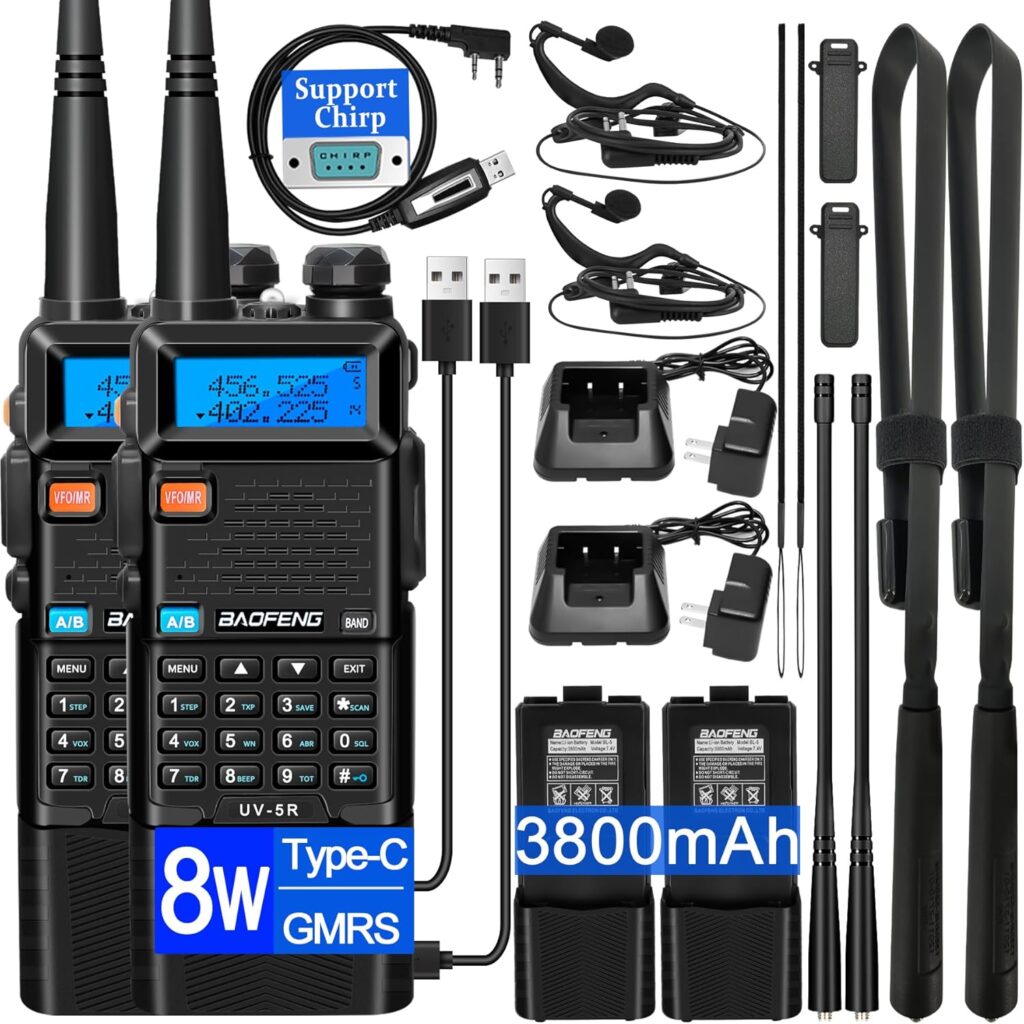
The Baofeng UV-5R stands as the undisputed champion of entry-level ham radios, offering remarkable value for your money at around $25-$ 35. This dual-band handheld transceiver covers both VHF (144-148 MHz) and UHF (420-450 MHz) amateur bands, making it incredibly versatile for local repeater work and simplex communication.
What sets the UV-5R apart is its surprising feature set for such an affordable radio. You get 128 memory channels, dual watch functionality, and a bright LED flashlight built in. The radio outputs 4-5 watts on high power, providing a solid range for a handheld unit. Programming can be tricky using the front panel buttons, but the free CHIRP software makes channel management much easier when connected to a computer.
Build quality is decent considering the price point, though the included antenna is mediocre at best. Upgrading to a Nagoya NA-771 antenna dramatically improves performance. The battery life typically lasts 8-12 hours with moderate use, and the radio accepts standard AA batteries with an adapter for emergencies.
New hams love the UV-5R because it removes financial barriers to getting on the air. While purists might criticize its construction quality compared to Japanese alternatives, this radio has introduced countless operators to the hobby and performs admirably for local communications, emergency preparedness, and learning basic radio operations.
Yaesu FT-60R Reliability and Durability
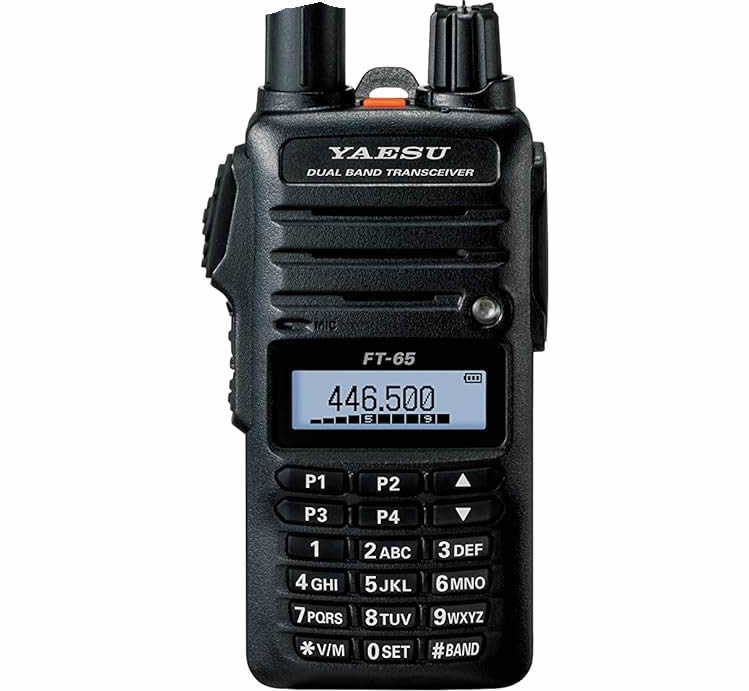
The Yaesu FT-60R represents the gold standard for rugged, dependable handheld operation in the sub-$200 category. Priced around $150-170, this dual-band transceiver delivers the legendary Yaesu build quality that has earned the company decades of loyal customers worldwide.
Construction quality immediately sets the FT-60R apart from cheaper alternatives. The radio features a die-cast aluminum chassis that can withstand drops, moisture, and temperature extremes that would destroy lesser radios. The waterproof rating and robust antenna connector mean this radio keeps working when others fail, making it perfect for outdoor activities, emergency response, and demanding field conditions.
Performance-wise, the FT-60R delivers clean, crisp audio transmission and excellent receiver sensitivity. The 5-watt output provides reliable coverage, while the efficient power management extends battery life significantly beyond budget competitors. Advanced features include 1000 memory channels, CTCSS/DCS encode/decode, wide/narrow bandwidth selection, and comprehensive scanning options.
The front panel controls feel solid and responsive, with clearly labeled buttons that work even while wearing gloves. Unlike some budget radios with confusing menu systems, the FT-60R uses intuitive controls that make field operation straightforward. Emergency responders and outdoor enthusiasts particularly appreciate the radio’s proven reliability when communication failure isn’t an option.
TYT MD-380 Digital Mode Capabilities
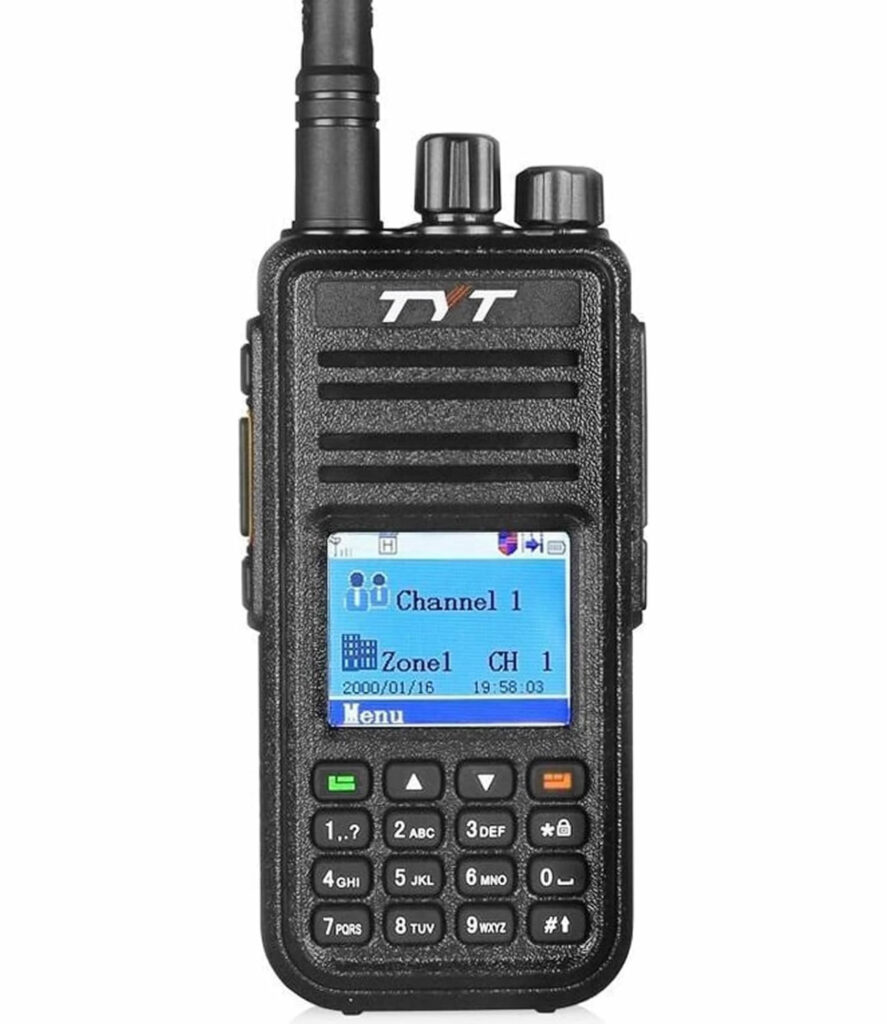
The TYT MD-380 breaks new ground by bringing DMR (Digital Mobile Radio) technology to amateur operators at an unprecedented price point of approximately $120-140. This revolutionary radio opens doors to the rapidly expanding world of digital amateur communication, previously accessible only through much more expensive equipment.
DMR technology offers significant advantages over traditional analog FM operation. Digital modes provide clearer audio quality, extended battery life, and the ability to communicate through digital repeater networks that span continents. The MD-380 connects seamlessly to Brandmeister and other DMR networks, enabling worldwide communication through internet-linked repeaters.
The radio supports both analog FM and digital DMR modes, ensuring compatibility with existing local repeaters while providing access to digital networks. Programming requires a computer and special software, but online resources and active user communities make the learning curve manageable. The radio stores 1000 digital contacts and 1000 channels, with features like GPS tracking, text messaging, and private calling between specific radios.
Audio quality in digital mode surpasses most analog radios, with consistent signal clarity that doesn’t degrade gradually like FM. The color display shows detailed information, including contact names, talk groups, and signal strength. Battery life extends dramatically in digital mode due to the efficiency of digital transmission.
For technically inclined hams interested in exploring digital modes without breaking the bank, the MD-380 provides an excellent entry point into the future of amateur radio communication.
Best Ham Radios To Buy And Mid-Range Ham Radios Offering Maximum Performance

Icom IC-7300 Advanced DSP Technology
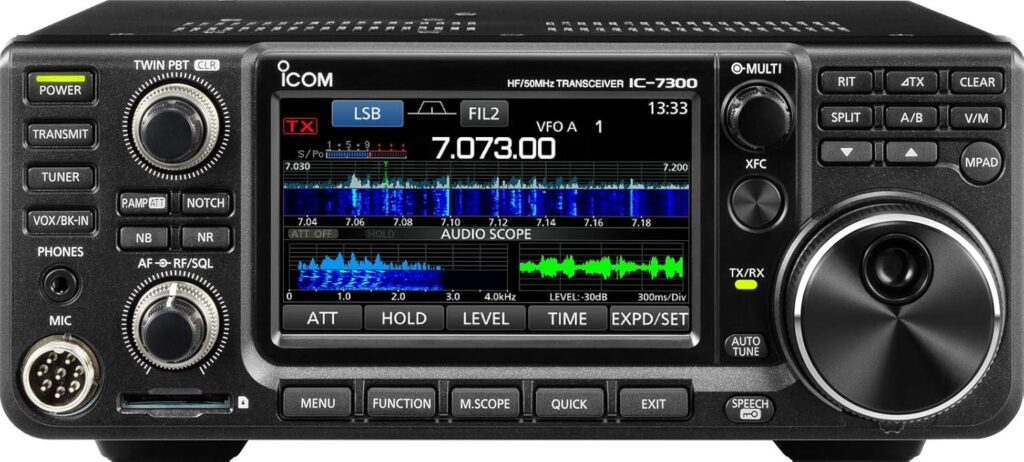
The Icom IC-7300 stands out as a game-changer in the amateur radio world, bringing software-defined radio (SDR) technology to the masses without breaking the bank. This transceiver delivers exceptional performance through its direct sampling architecture and 15-bit ADC conversion, eliminating many of the traditional analog circuit limitations that plague older designs.
The real magic happens with its advanced digital signal processing capabilities. The built-in spectrum scope and waterfall display provide real-time visualization of band conditions, making it easier to spot weak signals and avoid interference. The noise reduction and noise blanking features work incredibly well, cleaning up noisy signals that would be barely intelligible on conventional radios.
Operating the IC-7300 feels intuitive thanks to its large color touchscreen and familiar control layout. The menu system doesn’t require an engineering degree to navigate, and most functions can be accessed within a few button presses. Power output reaches 100 watts across all HF bands plus 6 meters, with excellent spectral purity that keeps you within FCC emission standards.
The built-in USB interface simplifies digital mode operations and computer control. You can connect directly to popular logging software or digital mode applications without additional interfaces. For contesters and DXers, the dual watch function and excellent receiver sensitivity make pile-up hunting much more manageable.
Yaesu FT-891 Portable HF Operations
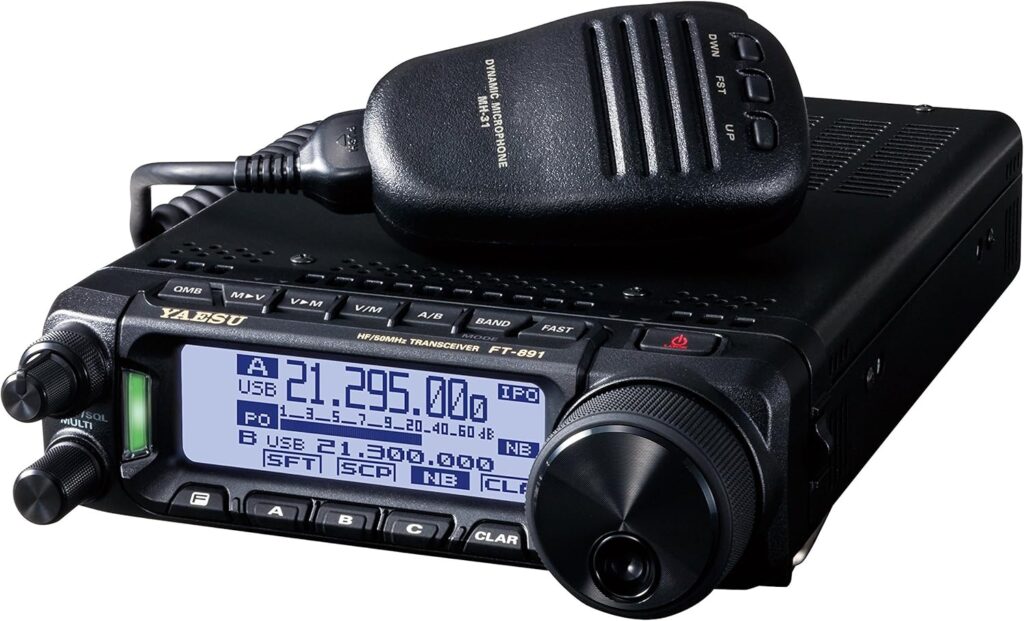
Designed specifically for portable and mobile operations, the Yaesu FT-891 packs serious HF capability into a compact, rugged package. Weighing just 5.7 pounds, this radio easily fits in a backpack for field day operations or emergency communications deployment.
The FT-891’s standout feature is its robust construction combined with portable-friendly power consumption. Operating efficiently from 13.8V DC, it draws reasonable current on receive while delivering a solid 100 watts on transmit. The efficient finals stay cooler than many competitors, reducing the need for external cooling during extended operations.
Real-world performance impresses across all HF bands. The receiver sensitivity rivals much larger base station radios, while the DSP noise reduction effectively cuts through atmospheric noise and interference. The built-in antenna tuner handles a wide range of impedances, making it forgiving with less-than-perfect field antennas.
Control feels natural despite the compact size. The front panel layout puts essential functions within easy reach, while the color display remains readable in various lighting conditions. Digital mode enthusiasts will appreciate the built-in USB port for computer interface, eliminating the need for additional hardware when running PSK31, FT8, or other digital protocols.
For emergency communicators and outdoor enthusiasts, the FT-891 delivers professional-grade performance without the bulk and power requirements of traditional base station equipment.
Kenwood TS-480SAT Versatile Base Station Features
The Kenwood TS-480SAT brings unique flexibility to the shack with its innovative detachable face design. This feature allows the control head to be separated from the main radio body by up to 16 feet using the supplied cable, perfect for desktop mounting while keeping the main unit in a rack or remote location.
Performance-wise, the TS-480SAT delivers clean 200-watt output across all HF bands plus 6 meters. The receiver front end handles strong signals well, maintaining sensitivity even in challenging RF environments. DSP functions include adjustable noise reduction, notch filtering, and speech processing that enhances both received and transmitted audio quality.
The built-in antenna tuner stands among the best in this price range, quickly matching a wide variety of antenna systems. Memory functions store tuner settings for different antennas, speeding up band changes during contests or regular operation. The dual receive capability allows monitoring two frequencies simultaneously, useful for split-frequency DX operations.
Operating convenience gets a boost from the large, easy-to-read display and logical control layout. The menu system organizes functions logically, though some advanced features require diving into sub-menus. Computer control works seamlessly with popular logging and contest software through standard CAT commands.
Alinco DX-SR8T Compact Design Advantages
Despite its modest size, the DX-SR8T doesn’t compromise on performance. The receiver delivers excellent sensitivity and dynamic range across all amateur bands from 160 through 6 meters. Built-in DSP processing provides effective noise reduction and filtering, while the optional antenna tuner handles most practical antenna systems with ease.
The front panel design maximizes functionality within the limited space. Essential controls remain easily accessible, while the clear display shows operating parameters without clutter. Band changes happen quickly using either the front panel buttons or the optional hand microphone controls.
Power consumption stays reasonable for both receive and transmit operations, making it suitable for portable power sources or battery backup systems. The efficient design generates less heat than many larger radios, reducing cooling requirements and improving reliability during extended operations.
For hams with limited space or those seeking a capable backup radio, the DX-SR8T delivers impressive performance per cubic inch. Its straightforward operation makes it equally suitable for newcomers and experienced operators who prefer simple, reliable equipment over feature-heavy alternatives.
Premium Ham Radio Models for Serious Operators: Best Ham Radios To Buy

Yaesu FTDX101D Contest Grade Performance
The Yaesu FTDX101D stands as a flagship transceiver designed specifically for serious contesters and DX hunters. This radio delivers exceptional receiver performance with its triple-conversion superheterodyne design and advanced DSP technology. The receiver’s impressive dynamic range of 110 dB helps prevent strong adjacent signals from overwhelming weaker DX stations you’re trying to work.
Contest operators particularly appreciate the FTDX101D’s lightning-fast QSY capability, allowing rapid frequency changes during pile-ups. The radio’s dual receive functionality lets you monitor your run frequency while simultaneously listening for multipliers on another band. The advanced noise reduction system effectively cuts through QRM and QRN, making those weak signals much more readable.
Key specifications include 200 watts of output power across all HF bands, plus 6 and 4 meters, with excellent spectral purity to keep neighbors happy. The large color TFT display provides clear waterfall and spectrum scope visualization, helping you spot band openings quickly. Memory channels can store up to 500 frequencies with detailed labels, perfect for contest preparation.
Icom IC-7851 Professional Grade Features
The Icom IC-7851 represents the pinnacle of amateur radio engineering, targeting professional-grade applications and the most demanding operators. This dual-receiver powerhouse features independent RF sections for each receiver, eliminating the compromises found in shared-oscillator designs. Both receivers offer identical performance specifications, making this radio ideal for serious DX work and contesting.
Professional features include a real-time spectrum scope with selectable bandwidths, allowing you to visualize band activity instantly. The radio’s advanced DSP provides multiple noise reduction algorithms, including auto-notch filters that can eliminate multiple heterodynes simultaneously. The IC-7851’s phase noise characteristics are exceptional, preventing reciprocal mixing that can mask weak signals.
The radio’s construction quality matches its performance, with a heavy-duty chassis and premium components throughout. The dual watch function monitors two completely separate frequencies simultaneously, while the diversity reception capability can combine signals from two antennas for improved weak-signal performance. With 200 watts of output and rock-solid frequency stability, the IC-7851 handles the most demanding operating conditions without breaking a sweat.
Elecraft K4 Software-Defined Radio Innovation
The Elecraft K4 represents a revolutionary approach to amateur radio design, combining traditional analog RF sections with cutting-edge software-defined radio technology. This innovative architecture allows firmware updates to add new features and improve performance long after purchase, making it a future-proof investment for serious operators.
The K4’s software-defined IF system provides unprecedented flexibility in signal processing and filtering. Users can customize filter characteristics, adjust noise reduction algorithms, and even add new demodulation modes through software updates. The radio’s dual-receiver design uses separate antenna inputs, offering true diversity reception capabilities that can significantly improve weak-signal performance.
Elecraft’s attention to detail shines through in the K4’s construction quality and user interface. The large color display presents information clearly, while the radio’s modular design allows for easy servicing and upgrades. The K4’s exceptional phase noise performance and strong-signal handling make it particularly effective in challenging RF environments.
The radio’s PC integration capabilities are outstanding, with comprehensive CAT control and built-in USB audio interfaces. This makes the K4 an excellent choice for digital modes, software-defined radio experimentation, and remote operation setups.
Handheld vs Base Station Radio Comparison

Portability and Battery Life Considerations
Handheld ham radios shine when you need mobility. You can toss one in your backpack for hiking, keep it in your emergency kit, or bring it along during public service events. Most modern handhelds weigh between 8-12 ounces and fit comfortably in your hand or belt clip.
Battery life varies dramatically between models. Basic handhelds typically run 8-12 hours on a full charge with moderate use, while high-end units can push 16-20 hours. Power-saving features like automatic standby modes help extend runtime. Lithium-ion batteries charge faster and last longer than older NiMH options, but they cost more to replace.
Base stations require AC power and stay put. While this limits mobility, you never worry about dead batteries during lengthy conversations or emergencies. Some operators add backup power supplies or connect their base stations to UPS systems for power outage protection.
The trade-off comes down to your operating style. If you primarily operate from home or a fixed location, a base station makes sense. For outdoor activities, emergency response, or field operations, handhelds win every time.
Power Output and Range Differences
Power output creates the biggest performance gap between handhelds and base stations. Most handheld radios output 1-8 watts, with 5 watts being standard for VHF/UHF models. HF handhelds typically produce even less power, around 1-5 watts maximum.
Base stations pack a serious punch. VHF/UHF base units commonly output 25-75 watts, while HF transceivers can push 100 watts or more. This power advantage translates directly into communication range and signal clarity.
Range depends on many factors beyond power output, including antenna height, terrain, and frequency band. A 5-watt handheld with its short rubber duck antenna might reach 2-5 miles in typical conditions. The same handheld connected to a proper external antenna can achieve 10-20 miles or more.
Base stations with their higher power and superior antenna systems routinely communicate hundreds or thousands of miles, especially on HF bands. Even VHF/UHF base stations can reach 50+ miles with good antenna placement and favorable conditions.
| Radio Type | Typical Power Output | Approximate Range |
|---|---|---|
| Handheld VHF/UHF | 1-8 watts | 2-20 miles |
| Base VHF/UHF | 25-75 watts | 10-100+ miles |
| Handheld HF | 1-5 watts | Variable (skip dependent) |
| Base HF | 100+ watts | Worldwide |
Antenna Connection Options and Flexibility
Antenna connections separate good radios from great ones. Handhelds come with built-in rubber duck antennas that work okay for close-range communication but limit performance. Most handhelds feature SMA or BNC connectors that accept aftermarket antennas.
Popular handheld antenna upgrades include longer whips for better gain, flexible antennas for durability, and magnetic mount antennas for vehicle use. Some operators carry multiple antennas and swap them based on operating conditions.
Base stations offer superior antenna flexibility right out of the box. Standard SO-239 (UHF) connectors accept a huge variety of antennas, from simple dipoles to complex beam arrays. You can easily switch between antennas for different bands or propagation conditions.
External antenna options for base stations include:
- Vertical antennas for local communication
- Beam antennas for directional long-distance work
- Wire antennas for stealth or budget installations
- Multi-band antennas covering several frequency ranges
Base stations also support antenna tuners, which help match antenna impedance for maximum power transfer. This flexibility lets serious operators optimize their stations for specific communication needs, whether that’s local emergency nets or DX contests spanning continents.

Finding the right ham radio doesn’t have to be overwhelming when you know what features matter most. From budget-friendly options under $200 that get you started in the hobby to premium models packed with advanced features for serious operators, there’s a radio that fits your needs and wallet. The key is matching essential features like frequency coverage, power output, and build quality to how you plan to use your radio.
Whether you choose a portable handheld for on-the-go communication or a powerful base station for your home setup, investing in a quality ham radio opens up a world of communication possibilities. Start with your budget and intended use, then pick a radio that offers room to grow as your skills develop. The amateur radio community is always ready to help newcomers, so don’t hesitate to reach out to local clubs for hands-on advice before making your final decision.
